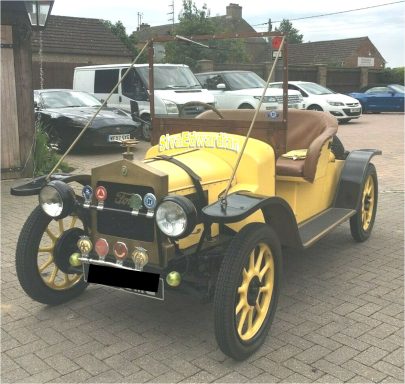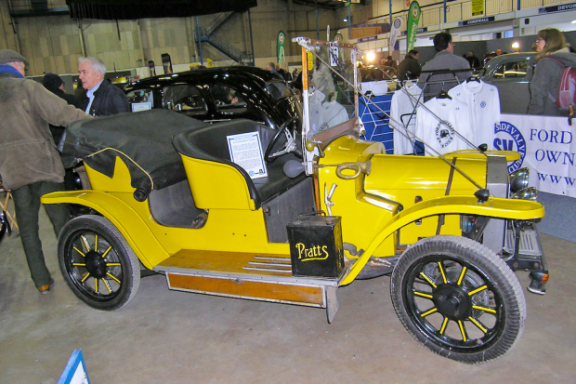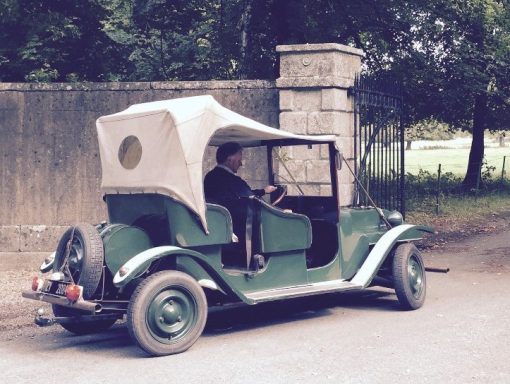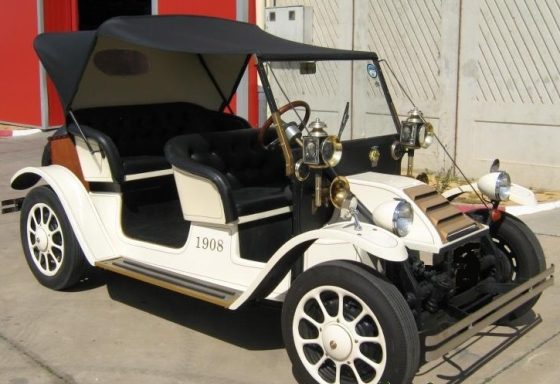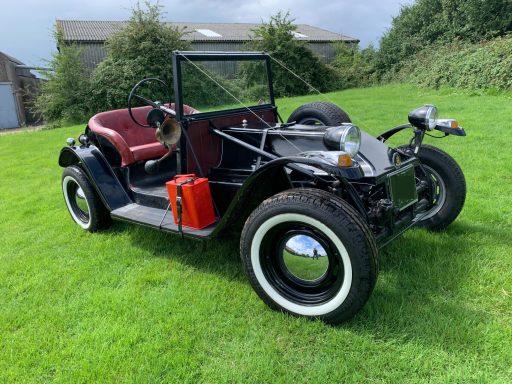.
Siva Edwardian overview & a little bit of history
Some 100 kits were made by Siva Engineering of Blandford Forum with the factory at Bryanston, Dorset from 1969 and finishing as Neville Trickett Design at Aylesbury around 1976.
The concept was originated by Michael Saunders who asked the car designer Neville Tricket to develop the idea of a veteran style “fun” car on a Ford Popular chassis.
The models offered with the Edwardian style bodies were:
Roadster (two seats) - Ford 103E based
Tourer (four seater) - Ford 103E based
Parisienne (two seater) - Citroen 2CV based - possibly.......
Parisienne (four seater) - Citroen 2CV based
San Remo (four seater) - VW Beetle based
Raceabout (two seater) - VW Beetle based
There was a very close family resemblance in design across the range especially the Ford, Citroen and the VW based San Remo.
So, where did it all start? Why would anyone want to make a car that looked so old? In the late sixties, the "sit up and beg" Ford Popular was an anachronism among the overhead valves, four-speed gearboxes and hydraulic brakes. These "perpendicular" Fords were all but worthless. I remember buying Ford 7Ys, Anglias and Populars for 50p up to around a fiver for spares. The most expensive was a whopping £25 - it had no rear axle but was not rusty and the panels were straight! The specials building craze had finished (by the addition of purchase tax) in the early sixties when the Austin/Morris minivan arrived (less Purchase Tax!) and blew the homebuilt car and motorcycle combination into the weeds! With the new Minivan for a little more money, you and the family could enjoy warm and dry motoring, excellent handing and good fuel economy into the bargain.
In the late sixties, Michael Saunders of Siva Engineering had an idea for a "fun car" that was easy and quick to build as well as cheap to buy. Also part of the plan was that the car would be built on an existing "platform" chassis - the VW Beetle and 2CV both had these but the Ford Popular 103E had a proper chassis and, of course, the mechanics that looked the part. The engine could easily pass for something from much earlier in the 20th century as there was no water-pump or heater. Almost all of the parts needed were on the old Ford and any of them from 1937 to 1959 could be used. Parts were still cheap and available from Ford dealers and a small selection of tools would allow the enthusiastic amateur to convert the old Ford into an Edwardian beauty. All manner of trimmings from junk shops could be added to get the period touch
A car designer was needed for the body work and this is where Neville Trickett came in. He has produced a number of classic kit and replica designs over the years - the GP Spyder (Porsche RS60), the Minisprint and the Siva Spyder and Saluki among many others.
The development of the fibreglass "tub" made a strong combination with the original Ford chassis once it was securely bolted down. The addition of two seat mouldings (one front seat on the roadster) and the four identical wings completed the bodywork. The one piece bonnet while a fiddle to remove and replace did keep the wet weather out of the engine! Many builders modified the bonnet to a proper folding arrangement or made their own. Most Sivas were not supplied with a radiator grill and the instructions suggested the radiator, in all its naked glory, should come from a Ford 105E Anglia. Later cars were supplied with a fibreglass radiator surround in the style of later Ford Model Ts.
Examples
of the Siva Range of Edwardians
All models were designed to be built on complete rolling chassis.
Experience the Siva world
Own a piece of automotive history
Explore our collection of survivors restored or as found. Siva Edwardian cars are a testament to the fun running an Edwardian style car.
©Copyright. All rights reserved.
We need your consent to load the translations
We use a third-party service to translate the website content that may collect data about your activity. Please review the details and accept the service to view the translations.
